Keywords
Medical education, Dermatology, Emergency department
Introduction
Dermatological conditions are a frequent reason for consultation at the emergency department (ED), with a prevalence of 1% in Singapore to 3.2% across Ontario, Canada [1,2]. In a 2009 study in Singapore, among 4061 patients presenting with a skin condition of 157,527 total patients, the commonest diagnoses were herpes zoster infection (20.8%) and eczema or dermatitis (11.6%) [3]. There is significant dermatologic diagnostic performances between primary care physicians and dermatologists with 93% correct diagnoses for dermatologists as compared to 50% for nondermatologists [4]. Despite educators expecting medical students to learn to diagnose or treat common skin diseases, little time is designated for this in most medical schools [5]. The advent of Teledermatology in the Emergency Service has allowed patients to obtain specialist advice remotely while reducing hospitalisations, outpatient clinic demands and inaccurate diagnoses. We aim to assess the level of knowledge of ED physicians in recognition of common skin lesions. This can further suggest improvements in continuous medical education as well as the medical school dermatology curriculum and evaluate the educational and service value of Teledermatology.
Methods
ED Physicians in a tertiary hospital in Singapore were surveyed with a 15-slides questionnaire based on identification of common dermatological and life-threatening conditions in the local population. Gender, years and level of practice as well as their scores were tabulated. Initial descriptive analysis of individual items was recorded and correlation analyses performed (Figure 1). Consent was obtained prior to administration of the questionnaire and all respondents' information was de-identified to maintain confidentiality.
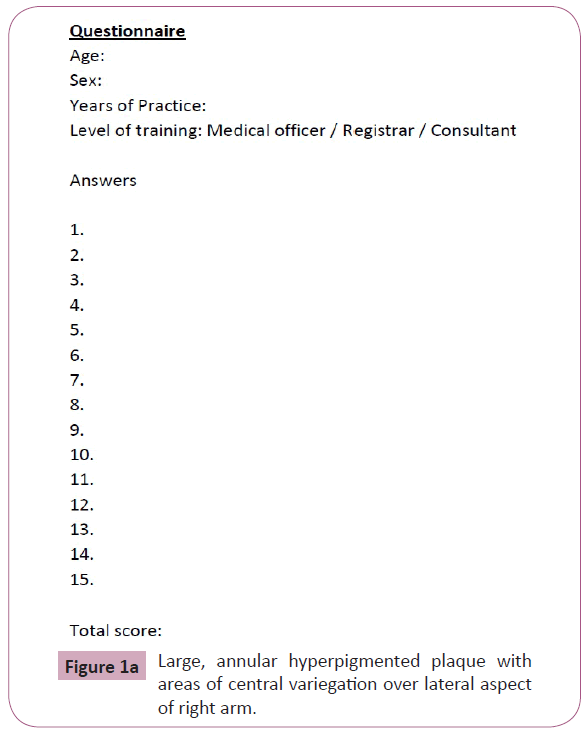
Figure 1a: Large, annular hyperpigmented plaque with areas of central variegation over lateral aspect of right arm.
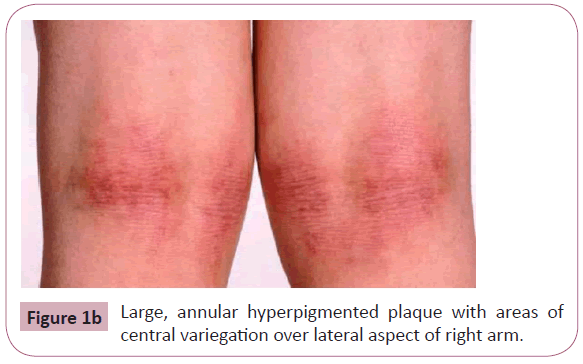
Figure 1b: Large, annular hyperpigmented plaque with areas of central variegation over lateral aspect of right arm.
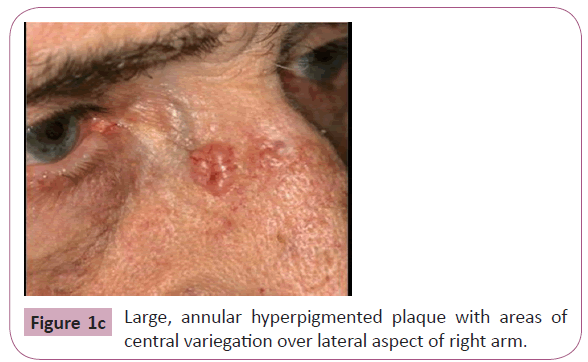
Figure 1c: Large, annular hyperpigmented plaque with areas of central variegation over lateral aspect of right arm.
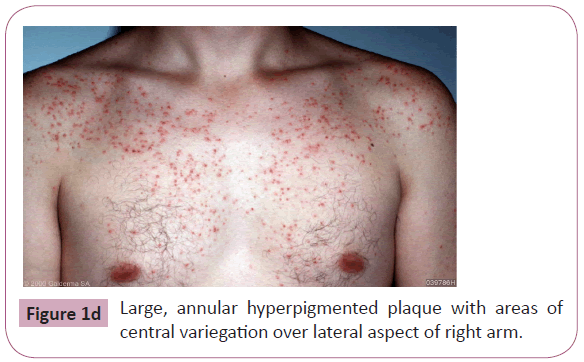
Figure 1d: Large, annular hyperpigmented plaque with areas of central variegation over lateral aspect of right arm.
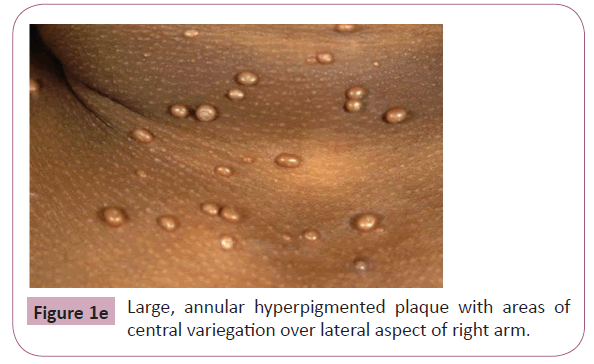
Figure 1e: Large, annular hyperpigmented plaque with areas of central variegation over lateral aspect of right arm.
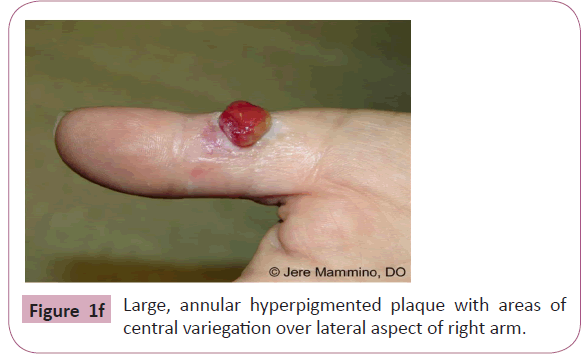
Figure 1f: Large, annular hyperpigmented plaque with areas of central variegation over lateral aspect of right arm..
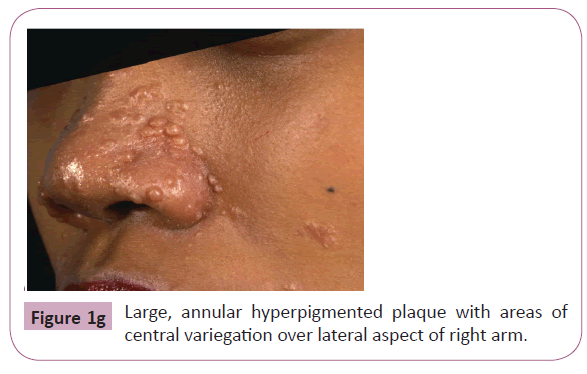
Figure 1g: Large, annular hyperpigmented plaque with areas of central variegation over lateral aspect of right arm.
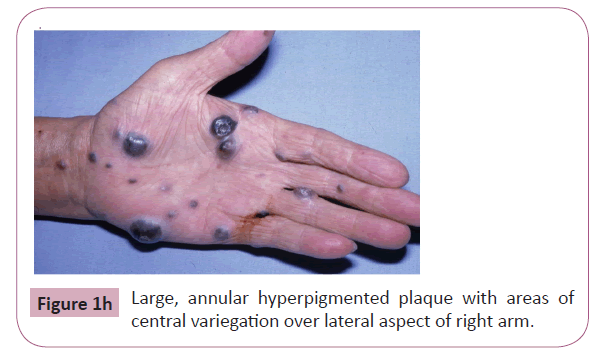
Figure 1h: Large, annular hyperpigmented plaque with areas of central variegation over lateral aspect of right arm.
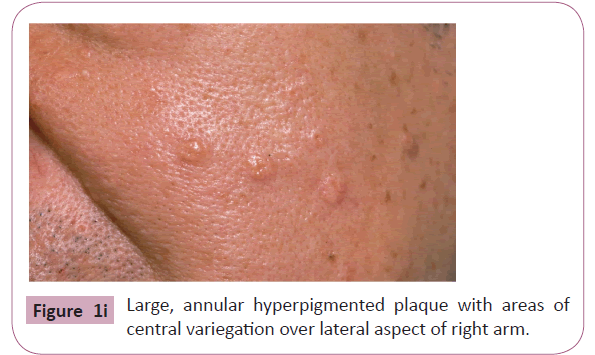
Figure 1i: Large, annular hyperpigmented plaque with areas of central variegation over lateral aspect of right arm.
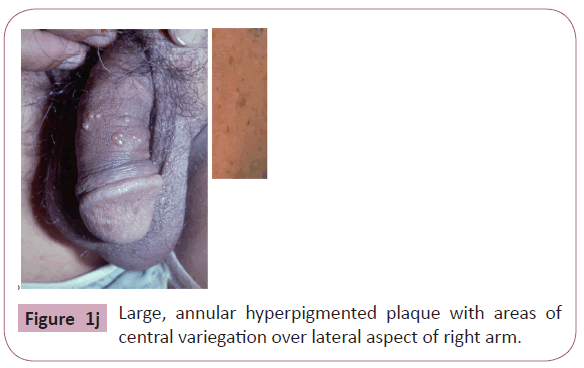
Figure 1j: Large, annular hyperpigmented plaque with areas of central variegation over lateral aspect of right arm.
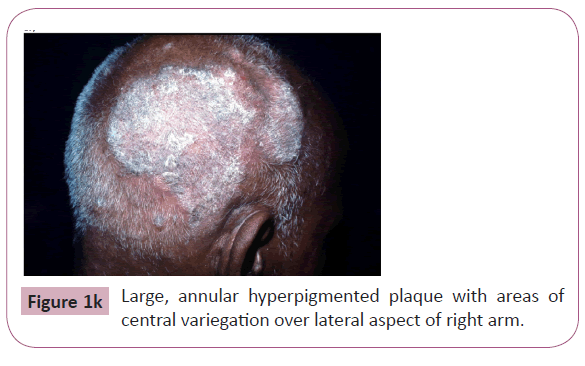
Figure 1k: Large, annular hyperpigmented plaque with areas of central variegation over lateral aspect of right arm.
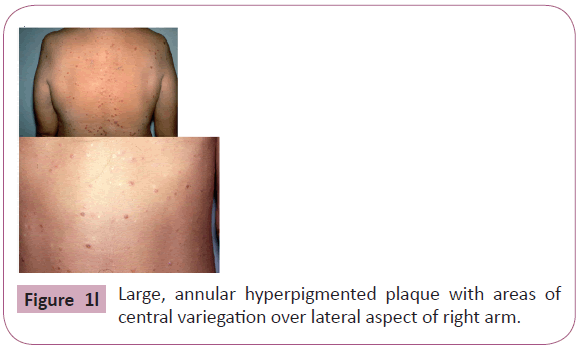
Figure 1l: Large, annular hyperpigmented plaque with areas of central variegation over lateral aspect of right arm.
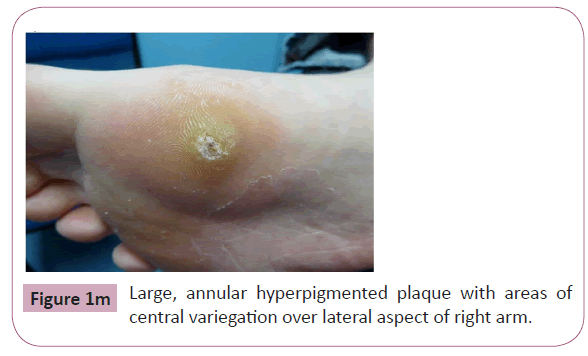
Figure 1m: Large, annular hyperpigmented plaque with areas of central variegation over lateral aspect of right arm.
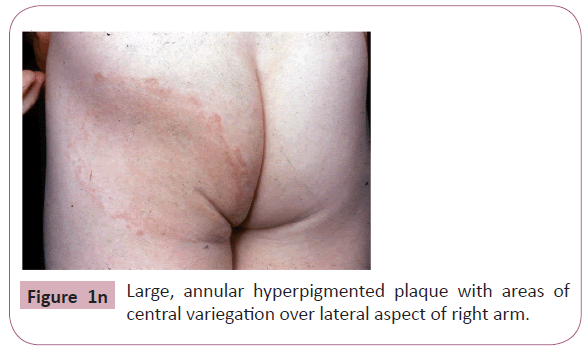
Figure 1n: Large, annular hyperpigmented plaque with areas of central variegation over lateral aspect of right arm.
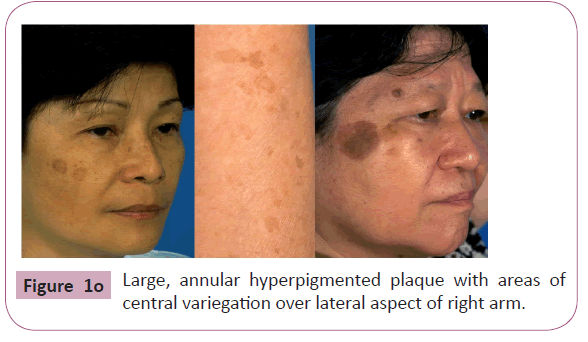
Figure 1o: Large, annular hyperpigmented plaque with areas of central variegation over lateral aspect of right arm.
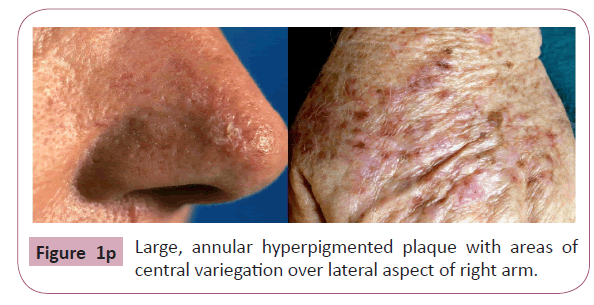
Figure 1p: Large, annular hyperpigmented plaque with areas of central variegation over lateral aspect of right arm.
Results
48 doctors from the ED were surveyed; 24 medical officers, 12 registrars and 12 consultants. There were a total of 26 females (54%) and 22 males (46%) who participated in the study. The number of picture slides correctly identified was expressed as the final summative score out of a maximum total of 15 (1 point for each correctly identified slide). The average scores for the medical officers, registrars and consultants were 9.9 (66%), 7.3 (48%) and 11 (73%) respectively (Table 1). Average years of practice were 3.3 years for medical officers, 9.5 years for registrars and 9.8 years for consultants. Correlation analyses performed for years of practice and scores showed a value of -0.341. There was a 95% response rate for the questionnaire. Standard error comparing of years of practice with sample number was 0.64, standard error of questionnaire scores with sample number was 0.41 and that of years of practice with questionnaire scores was 4.0.
| Level |
Number (%) |
Average years of practice |
Average scores (%) |
| Consultants |
12 (25%) |
10 |
11 (73%) |
| Registrars |
12 (25%) |
9 |
7.3 (48%) |
| Medical Officers |
24 (50%) |
3 |
9.9 (66%) |
Table 1: showing average questionnaire scores and years of practice among emergency department physicians surveyed.
Discussion
Recognition of common dermatological conditions is essential for proper diagnosis and management. Knowledge gaps in the ED can be bridged with Teledermatology which highlights its potential educational efficacy. Although limited by sample size, a negative correlation between years of medical practice and questionnaire scores prompts further opportunities for continued medical education and multidisciplinary exchange of knowledge.
8844
References
- Tan ES, Tang MB, Peng LL (2013) Dermatological disorders at the emergency department of a tertiary hospital in Singapore. Ann Acad Med 42: 155-156.
- Baibergenova A, Shear NH (2011) Skin conditions that bring patients to emergency departments.Archives of dermatology 147: 118-120.
- Wang E, Lim BL, Than KY (2009) Dermatological conditions presenting at an emergency department in Singapore. Singapore Med J 50: 881-884.
- Federman DG, Concato J, Kirsner RS (1999) Comparison of dermatologic diagnoses by primary care practitioners and dermatologists. A review of the literature.Archives of family medicine 8: 170-172.
- Hansra NK, O'Sullivan P, Chen CL, Berger TG (2009) Medical school dermatology curriculum: are we adequately preparing primary care physicians? J Am Acad Dermatol 61: 23-29.






















